 Analistul american Richard Andrew Hall, un fin observator al realitatilor din Romania si un pasionat cercetator privind adevarul din decembrie 1989, scoate la lumina o relatare din Tineretul Liber al anului 1990 - click pe foto -, care ridica problema folosirii la "revolutie" a asa numitelor gloante "dum-dum". Rich Hall a strans un volum imprsionat de marturii si analize despre lovitura armata din decembrie 1989 pe blogul http://romanianrevolutionofdecember1989.wordpress.com/, pe care vi-l recomand, dupa cum am mai facut-o, dealtfel, pe-aici.
Analistul american Richard Andrew Hall, un fin observator al realitatilor din Romania si un pasionat cercetator privind adevarul din decembrie 1989, scoate la lumina o relatare din Tineretul Liber al anului 1990 - click pe foto -, care ridica problema folosirii la "revolutie" a asa numitelor gloante "dum-dum". Rich Hall a strans un volum imprsionat de marturii si analize despre lovitura armata din decembrie 1989 pe blogul http://romanianrevolutionofdecember1989.wordpress.com/, pe care vi-l recomand, dupa cum am mai facut-o, dealtfel, pe-aici.Explicatie foto RAH: Trimis pentru tratament in strainatate... din cauza gloantelor DUM-DUM. Cazul Radu Sofran, 34, "sapte gloante au explodat in mine, gloante din acelea periculoase, dum-dum..." Tineretul Liber, 3 martie 1990
Tot Rich Hall prezinta zilele acestea si o analiza despre amalgamul de informatii si dezinformari existent si astazi in ce priveste momentul decembrie 1989. O reproduc mai jos:
Romania December 1989. Doublespeak: The All-too-Familiar Tales of Nicolae Ceausescu’s Double by Richard Andrew Hall
Posted by romanianrevolutionofdecember1989 on September 1, 2009
(after clearing CIA Publications Review Board, this was submitted to Habsburg H-Net, where Nicolae Harsanyi had published an interesting article on December 1989 back in 1999. The Habsburg editors never responded, and the article does not appear on the site. Nevertheless, several years later it came up as Habsburg Occasional Paper No. 3, 2004, in a yahoo search. So that is what I list it under. Go figure…)
Doublespeak: The All-too-Familiar Tales of Nicolae Ceausescu’s Double
by Richard Andrew Hall
HABSBURG Occasional Papers, No. 3. March 2004
–Romania does not need the “Dracula-land” that officials seem intent on building; the historiography of the December 1989 Revolution already supplies more than enough absurdity, fantasy, and kitsch.
Epilogue as Prelude
The capture of Iraqi dictator Saddam Hussein—from the Romanian perspective, in December of all months!—inevitably evoked comparisons even in the international media with the fall of the Ceausescu regime in December 1989. In Romania, Hussein’s capture touched off comparisons between how Hussein will face real justice and how the Ceausescus were summarily tried and executed on Christmas Day 1989. Combining the contrast with the comments of the famous Russian dissident Vladimir Bukovski—who while visiting Romania in November stated that the KGB orchestrated the events of Ceausescu’s overthrow—the Romanian press had a field day. “Case closed,” many editorialists, intellectuals, and politicians hastened to pronounce in their comments on this year’s anniversary of the Revolution.
Bukovski’s comments were interpreted as gospel precisely by those who have for years accepted and promoted this theory and who recognize its utility in contemporary Romanian political debates. Bukovski’s credibility is enhanced by his stature and integrity as a former Soviet dissident, and by his post-1991 access to Soviet archives and publication of the documents he was able to surreptitiously photocopy. But two critical points have to be made with regard to Bukovski’s claim about Romania’s December 1989 events. First, he alleges that the collapse of communist rule throughout Eastern Europe—including the fall of the Berlin Wall—were part of an elaborate KGB plot, hatched beginning from 1988. Second, he first made such allegations well-before he got access to those Soviet archives.
In a book that is now several years old, the Romanian author Vladimir Alexe, who endorses a similar viewpoint on Romania‘ s December 1989 events, quoted Bukovski’s comments in 1990 on the collapse of communism in Eastern Europe, as follows:
Never has the role of the KGB inside the country [the USSR] or abroad been so important. The Soviet secret services are the ones that watched the overthrow of Ceausescu in Romania, launched the “velvet revolution” in Czechoslovakia, [and] that took measures to overthrow Erich Honecker in East Germany, producing especially favorable circumstances for the destruction of the Berlin Wall (” L’Empire du moindre mal,” Libre Journal, Paris, nr. 1, se pt-oct, 1990, p. 30) (quoted on http://www.geocities.com/nicutim/BSIliescu.pdf).
At least one Romanian commentator attempted to legitimize the credibility of Bukovski’ s recent statements in Romania by appealing to the fact that the documents substantiating Bukovski’s claims are “on the Internet, anybody can access them.” It is true that Bukovski has published Soviet archival documents on the Internet, including from the period 1988 to 1991—however, none of them are about the December 1989 events in Romania (http://psi.ece.jhu.edu/~kaplan/IRUSS/BUK/GBARC/pdfs/sovter75/sovter75-e.html). Indeed, given the amazing antennae of the Romanian press for anything that substantiates their beliefs on this matter—and their deafness to anything that challenges those beliefs—one would expect that did such documents exist they would have been reproduced in the Romanian press by now.
It would be one thing, of course, if arguments about the Romanian Revolution existed in a vacuum—but they don’t—and unfortunately claims like those of Bukovski are a godsend to those with less-than-noble intentions in Romania, particularly as regards establishing the truth about who was responsible for the violence that took so many lives in December 1989.
–
Late last July, there was a book-signing in Bucharest. The man signing books was Dumitru Burlan—64 years old, a colonel in the former Securitate’s Fifth Directorate, and, last but not least, Nicolae Ceausescu’s so-called “unique double.” On the occasion of his book-signing, Burlan was kind enough to say a few words about his book to the journalists gathered for the event. A correspondent for Reuters quoted Burlan as declaring: “Romania’s secret service [i.e. the Securitate] staged Nicolae Ceausescu’s down fall…the KGB wanted to overthrow Ceausescu, even his son Nicu did… I wrote the book to show the Romanian people a small part of the truth.”
The title of Burlan’s book is “Sensational: After 14 Years Nicolae Ceausescu’s Double Speaks!” That it is possible that anything could be “sensational” in Romania after the past 14 years is in itself difficult to believe. The bigger problem with the title, however, is that Burlan did not really wait 14 years to “confess.”
Two years ago Burlan gave a multipart interview to the Romanian monthly “Lumea Magazin” (http://www.lumeam.ro/nr10_ 2001/politica_si_servicii_secrete.html - link inactiv - nota mea, VR). In that interview, he commented on the biggest enduring controversy of the Romanian Revolution: Who was responsible for the violence that claimed 942 lives—85% of the total 1,104 people who died in all “between 22 December, when the Ceausescus fled power, and Christmas Day, when they were tried and executed? At the time, elements of the Securitate who remained loyal to the Ceausescus—the so-called ‘terrorists’”were blamed for the bloodshed. However, despite the pledge by the former communists who seized power from Nicolae Ceausescu to prosecute those responsible, justice has never been served.
In the same interview, Burlan answers that those responsible for the bloodshed “were from the Army, [specifically] from DIA [the Army's intelligence unit].” According to Burlan, the DIA were also responsible for the placement of gunfire simulators “so that everything—[the staged war that Ceausescu's successors allegedly put in motion]—would appear credible.”As for the Securitate, Burlan protests: how could they have done anything “with just their Makarov pistols?”
Burlan’s answers seek to accredit the idea that the former communists who took power from Ceausescu simulated resistance by alleged Ceausescu loyalists in order to ease their seizure of power and gain a revolutionary legitimacy they otherwise would have lacked. The Securitate were thus victims of their poor image among the populace and of a power grab by unscrupulous nomenklaturists who wished to legitimize themselves by heaping false blame on the Securitate.
Burlan’ s argument that the revolution was “staged,” some group other than the Securitate was responsible for the post-22 bloodshed, and that the Securitate did not open fire is a familiar tale by now. What has changed through the years is that certain variants—including the DIA variant Burlan markets—have become more common in the literature and interviews of the former Securitate and Ceausescu nostalgists. One doesn’t have to look far to see former high-ranking Securitate officers accrediting the idea that DIA, and most assuredly not the Securitate, bears responsibility for the December bloodshed. Just in the past three years, former Securitate officials such as Nicolae Plesita, Teodor Filip, and Ion Hotnog have argued this thesis. Nor is it the least bit surprising that these same officials marry the thesis with another perennial Securitate favorite: the suggestion that Russian and Hungarian agents posing as tourists—for those who with a distaste for detail, “occult forces”—played a seminal role in provoking the downfall of the Ceausescu regime and in the bloodshed that followed the Ceausescus’ flight from power. (For additional discussion of these ” tourists” see http://www.rferl.org/eepreport/2002/04/8-170402.html.)
The DIA variant, so dear to the hearts of Ceausescu’s double and his Securitate counterparts, has a long and fabled history. In the early and mid-1990s, it became a favorite of the opposition to the communist successor regime of President Ion Iliescu—an opposition that included many of those who had suffered most under the old regime. (After being voted out in 1996, Iliescu returned to the presidency in the 2000 elections.) In the opposition press, noted journalists such as Ioan Itu and Ilie Stoian at “Tinerama,” Cornel Ivanciuc at “22″ and later at “Academia Catavencu, ” and Petre Mihai Bacanu at “Romania Libera” promoted the DIA thesis at one time or another.
Opponents of the Iliescu regime believed the “staged war” story and its DIA variant be cause it seemed plausible given the undemocratic way the Iliescu regime behaved in the early post-Ceausescu years, and because it compromised Iliescu and his associates by suggesting that they “stole the revolution” through an elaborate plan to feign resistance by pro-Ceausescu elements of the Securitate. As with all beliefs that are viewed as spontaneous, grassroots/bottom-up, and therefore “pure,” the “staged war” theory possessed a power and hold on the imagination that ideas regimented “from above,” by a regime, can simply never achieve. Moreover, it possessed something of an (intellectual) haiduc romanticism and it was empowering at a time when the opposition was hounded by the Iliescu regime and weak, providing opponents with an issue of comparative consensus that could bind them together and provide them political identity. The theory thus fit with their fears, suspicions, and prejudices, and was politically expedient—a potent mixture that left them ripe for manipulation.
Unfortunately, very few of the opposition were familiar with or cared about the origins of the DIA thesis. The DIA thesis was older than they realized. Gheorghe Ratiu, the former head of the Securitate’s First Directorate (the one most considered “the political police”), was disseminating the theory back in early 1992. Indeed, the DIA theory can be traced back to a November 1990 interview with a former Securitate officer in a well-known provincial weekly (”Nu”), and probably even earlier—to two articles written by Gheorghe Ionescu Olbojan for “Zig-Zag” magazine in April 1990 and particularly July 1990. In fact, Olbojan lauded himself for this accomplishment—and for its spread and influence since—in a book he published in 1994. Olbojan’s pre-1989 occupation deserves mention, however: as he admits in the book, he worked for the Securitate. The roots of the DIA theory thus lie in the former Securitate. (For additional discussion of the Olbojan case see http://www.rferl.org/eepreport/2002/04/7-030402.html.)
For the former Securitate, the DIA theory had one goal above all others, and it is as old as history itself: blame someone else in order to hide your own responsibility. Unfortunately, although some journalists in Romania have written with skepticism and sarcasm about the effort of Ceausescu’s double to disinform history, it is telling that they leave much of his discussion of the Revolution untouched. The confluence of blind political partisanship, opportunism, half-truths, misinformation, and disinformation a la Burlan have simply debased and devalued the currency of truth as regards what exactly happened in December 1989. To believe in Romania today that the Securitate were responsible for the vast majority of the bloodshed in December 1989 is to be viewed as the equivalent of a flat-earther.
If not Ceausescu himself from the grave, at least his double, is having the last laugh.
Richard Andrew Hall holds a Ph.D. from Indiana University
He currently works and lives in Northern Virginia.
He welcomes comments or questions on this article at hallria@msn.com.


































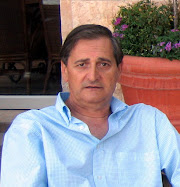
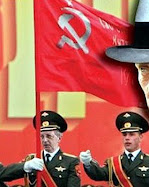




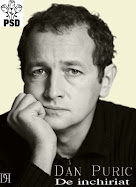





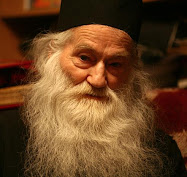






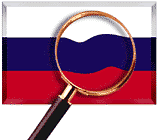

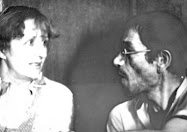






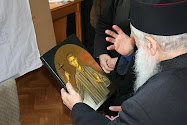
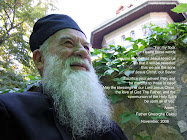


No comments:
Post a Comment